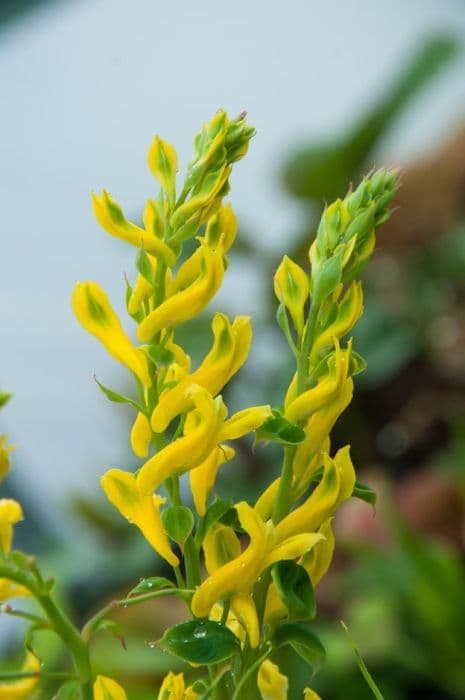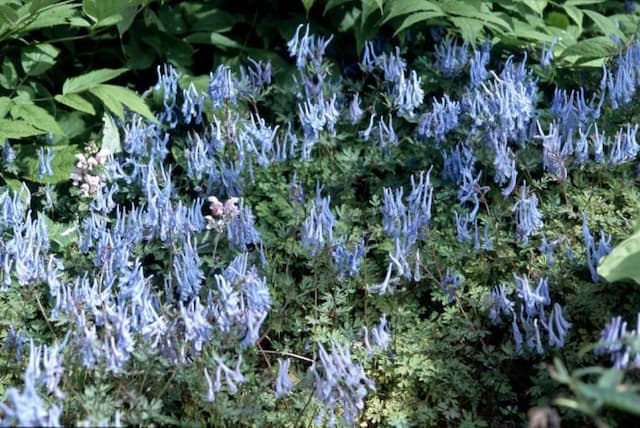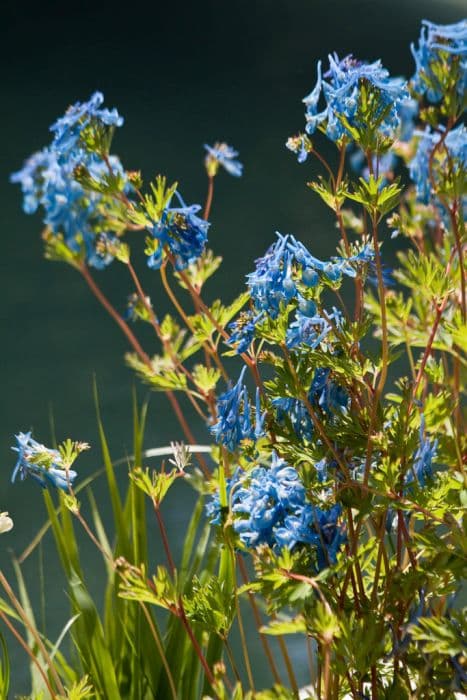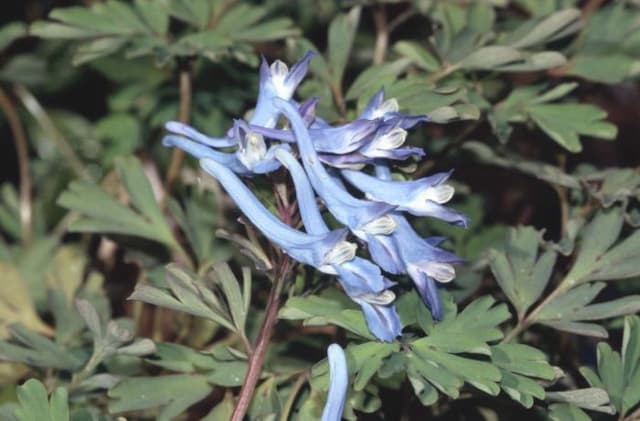California Poppy Eschscholzia californica 'Lemon Bush' (Thai Silk Series)

ABOUT
The California poppy 'Lemon Bush' from the Thai Silk Series is a striking flowering plant, celebrated for its beautiful blossoms. The plant boasts a bushy collection of finely divided, blue-green foliage that serves as a delicate backdrop to its real standout feature: the flowers. These blooms present a soft, creamy-yellow hue with petals that are silk-like in texture, creating a soothing and warm appearance. The petals may also show a gentle overlap, which adds to their full look, making the flowers appear abundant and lush. The center of each flower typically has a contrasting darker color, which can range from a muted orange to a brownish tone, drawing the eye and enhancing the sunny lemon color of the petals. Blooming over a long season, the California poppy 'Lemon Bush' is a cheerful addition to any garden space with its bright demeanor and inviting color palette.
About this plant
 Names
NamesFamily
Papaveraceae
Synonyms
California Poppy, Golden Poppy, California Sunlight, Cup of Gold
Common names
Eschscholzia californica 'Lemon Bush'.
 Toxicity
ToxicityTo humans
California Poppy is considered to be non-toxic to humans. While this plant is not generally eaten, there are no well-documented cases of poisoning from ingesting California Poppy. Therefore, it is unlikely that consuming parts of the plant would lead to serious consequences in humans. However, as with any plant not typically used for consumption, individuals may have varying sensitivities, and it's always advisable to avoid ingesting plants that are not known to be edible.
To pets
California Poppy is also considered to be non-toxic to pets. It does not contain any known toxins that would cause harm to animals if ingested. Therefore, if pets consume parts of this plant, they're unlikely to experience any significant health issues. Always monitor pets for any unusual reactions when they ingest any plant material, and consult a veterinarian if any concerning symptoms arise.
 Characteristics
CharacteristicsLife cycle
Annuals
Foliage type
Deciduous
Color of leaves
Green
Flower color
Yellow
Height
1 feet (0.3 meters)
Spread
1 feet (0.3 meters)
Plant type
Herb
Hardiness zones
8
Native area
California
Benefits
 General Benefits
General Benefits- Aesthetic Appeal: California Poppy 'Lemon Bush' adds a vibrant splash of yellow color to gardens, which can enhance the visual appeal of the landscape.
- Low Maintenance: California Poppy is known for being easy to grow and requiring minimal care, making it ideal for gardeners of all levels.
- Drought Tolerance: As a native wildflower adapted to California's dry climate, it is highly drought-resistant, helping to conserve water in gardens and landscapes.
- Attracts Pollinators: The bright flowers attract bees, butterflies, and other beneficial insects, promoting biodiversity and aiding in pollination of nearby plants.
- Self-Seeding: California Poppy 'Lemon Bush' often self-seeds, providing a convenient way to ensure yearly blooms without the need for repurchasing and replanting.
- Quick Growth: This plant tends to grow quickly, providing almost immediate gratification to those looking to add color to their garden quickly.
- Edible Uses: Some parts of the California Poppy are edible and can be used in cooking, although this should only be done with proper knowledge and precautions.
- Natural Pest Deterrent: While not a primary function, its strong fragrance and certain compounds can help deter pests from the garden.
- Soil Improvement: California Poppy can help enrich the soil as they die back and decompose, adding organic matter and nutrients back into the ground.
 Medical Properties
Medical PropertiesThis plant is not used for medical purposes.
 Air-purifying Qualities
Air-purifying QualitiesThis plant is not specifically known for air purifying qualities.
 Other Uses
Other Uses- As a natural fabric dye – The petals of the California poppy can be used to create a gentle yellow or orange dye for coloring fabrics.
- As a photography subject – California poppies, with their striking colors, are popular subjects for photographers and can be used to enhance the visual appeal of photographic works.
- In floral arrangements – Although not a traditional cut flower due to its tendency to close at night, the California poppy can add a vibrant touch to floral displays when used thoughtfully.
- As an artistic muse – The vibrant color and form of California poppies inspire artists and are oftentimes depicted in paintings, drawings, and other artistic media.
- In garden competitions – The unique and bright colors of the California poppy make it a favorite in horticultural shows and garden competitions.
- For educational purposes – California poppies are used in schools and educational programs to teach children about plant biology and the state's natural history, as it is California's state flower.
- As a theme for festivals – In areas where California poppies grow, they can become a central theme for local festivals celebrating regional flora and fauna.
- In landscaping for wildlife attraction – California poppies are planted to attract pollinators such as bees and butterflies, thus promoting biodiversity.
- For culinary decoration – The petals of the California poppy can be used for decorative purposes in gourmet dishes, although they are not commonly consumed.
- As a motif in fashion design – The distinctive shape and hue of the California poppy petals are sometimes used as inspiration for patterns in textiles and fashion designs.
Interesting Facts
 Feng Shui
Feng ShuiThe California Poppy is not used in Feng Shui practice.
 Zodiac Sign Compitability
Zodiac Sign CompitabilityThe California Poppy is not used in astrology practice.
 Plant Symbolism
Plant Symbolism- Resilience: As a member of the poppy family, the California poppy, which 'Lemon Bush' belongs to, often symbolizes resilience for its ability to thrive in tough conditions.
- Peace: Poppies are commonly associated with peace and rest, partly due to their sedative properties and use in sleep aids.
- Remembrance: While typically associated with red poppies, all poppies, including the California poppy, have come to represent remembrance, especially for soldiers who have died during wartime.
- Beauty and Joy: The vibrant color and delicate form of the California poppy convey a sense of beauty and joy.
- Sleep and Comfort: Traditionally, poppies have been linked to sleep, comfort, and oblivion, in reference to their opiate content and use as a medicinal plant to induce sleep.
 Water
WaterThe California poppy, including the 'Lemon Bush' variety, prefers moderate watering and well-draining soil. Water the plant deeply once a week, providing about 1 to 1.5 gallons per plant, ensuring moisture reaches the root zone. In hotter, drier conditions, frequency may increase to twice per week. Always check the soil moisture at about an inch deep; if it feels dry, it's time to water. Overwatering or poor drainage can lead to root rot, so err on the side of underwatering rather than overwatering for this drought-tolerant species.
 Light
LightThe 'Lemon Bush' California poppy thrives in full sun, requiring a minimum of 6 to 8 hours of direct sunlight daily. Plant it in a spot that receives unhindered light throughout the day to encourage the best growth and flowering. It can tolerate partial shade, but flowering could be reduced. Too little light can lead to leggy plants and fewer blooms.
 Temperature
TemperatureCalifornia poppies, such as the 'Lemon Bush', prefer a temperate range of 50°F to 85°F and can survive a light frost but are not frost-tolerant in prolonged exposure to temperatures below freezing. They perform best in warm temperatures and should be planted once the danger of heavy frost has passed. Poppies will start to struggle in temperatures above 100°F and may go dormant in the summer heat if overly stressed.
 Pruning
PruningRegular deadheading of spent flowers on the 'Lemon Bush' California poppy will encourage continuous blooming. Pruning is typically not required, but if plants become leggy, you can cut them back by a third to encourage bushier growth. The best time for pruning California poppies is late summer or fall, after the main flowering period, to prepare the plant for winter and next season's blooms.
 Cleaning
CleaningAs needed
 Soil
SoilCalifornia poppy 'Lemon Bush' thrives in well-draining soil with low fertility; a mix of sandy loam or a blend of equal parts potting soil, coarse sand, and perlite is ideal. The preferred soil pH ranges from slightly acidic to neutral (6.0 to 7.5).
 Repotting
RepottingCalifornia poppies like 'Lemon Bush' rarely need repotting as they are annuals or short-lived perennials; they are typically sown directly outdoors or started in biodegradable pots to avoid root disturbance.
 Humidity & Misting
Humidity & MistingCalifornia poppies, including 'Lemon Bush', are tolerant of low humidity levels and do not require high humidity, making them well-suited to dry climates.
 Suitable locations
Suitable locationsIndoor
Grow 'Lemon Bush' California poppy in a sunny window in sandy soil.
Outdoor
Plant 'Lemon Bush' in full sun, in well-draining soil.
Hardiness zone
5-10 USDA.
 Life cycle
Life cycleCalifornia poppy 'Lemon Bush' starts its life cycle with seed germination, typically in late winter or spring, when temperatures are favorable. Once germinated, the seedlings establish a deep taproot and grow rapidly, producing feathery blue-green foliage. As the plant matures, it develops bright lemon-yellow flowers which bloom from spring to early summer and can continue blooming if conditions are favorable and deadheading is practiced. Following pollination by insects, the flowers produce elongated seed pods that eventually dry and split open, releasing seeds for the next generation. The California poppy 'Lemon Bush' may either die back after seeding, behaving as an annual, or survive as a perennial in milder climates by going dormant during the heat of summer or cold of winter. In the following growing season, new plants may arise from self-sown seeds or the previous year’s plant may regrow if it survived as a perennial.
 Propogation
PropogationPropogation time
Spring to Summer
Eschscholzia californica 'Lemon Bush', commonly known as California poppy, is most frequently propagated by seeds. The best time to sow California poppy seeds is in early spring, directly into the garden where they are to flower. The seeds need well-drained soil and should be scattered thinly and covered lightly with about 1/8 inch (about 3 millimeters) of soil. They require full sun and should be watered gently to avoid washing the seeds away. Once the seedlings have emerged and are large enough to handle, they can be thinned out to about 6 to 12 inches (15 to 30 centimeters) apart to allow adequate space for growth. No other methods are as commonly used as seed propagation for this plant due to its generally simple and successful outcome.









